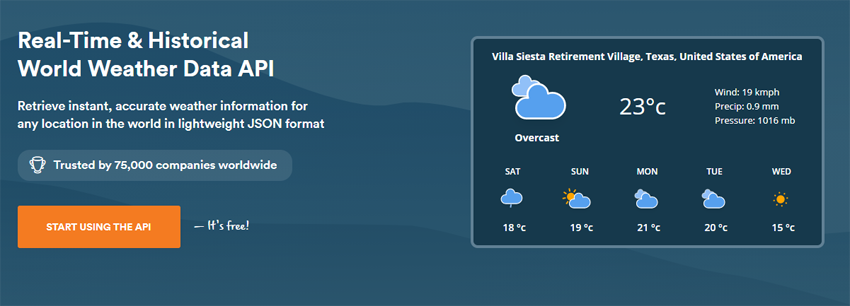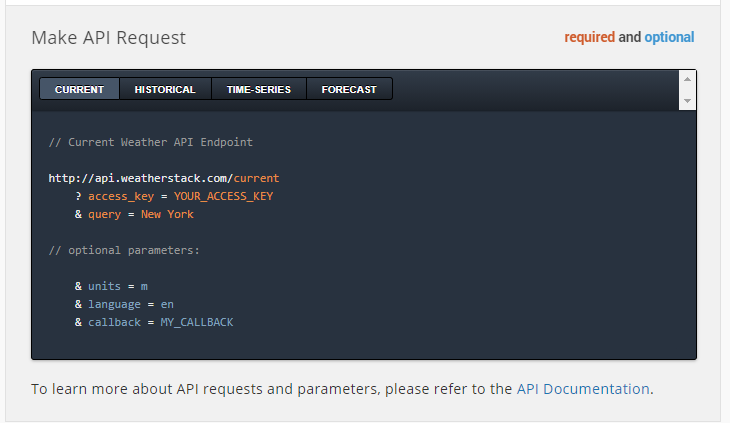“You can always talk about the weather.” It’s a cliched phrase, but regardless of a person’s personality, political views, or culture, the weather is a subject that anyone and everyone can talk about and find common ground. It’s the universal truth that binds humanity together.
But the weather is more than that—it’s a force that affects humanity on a grand scale. Hardly a day goes by where everyone doesn’t check, or at least know about, the weather so that they can be properly prepared for a given day. And, of course, there are few things more unifying to a people within the same region than experiencing the same weather—especially during major storms that sweep across a continent.
The weather is an important part of our daily lives, and while everyone can check their favorite smartphone app or local news, there are times when individuals and businesses need a bit more. For example:
- Imagine a smart home that automatically turns on a bathroom heater on cold mornings before you wake up and get ready for work.
- What if a business could automatically shut off the building’s water supply and drain its pipes if the overnight forecast predicts a hard freeze?
- Think about municipalities that could send automated alerts to their citizens with real-time, up-to-date emergency alert data.
These types of applications need reliable and up-to-date weather information, and here is where the weatherstack API comes in. By using the weatherstack API, you can power your weather-based applications with accurate real-time, historical, and forecast data.

There’s a reason why weatherstack is trusted by over 75,000 companies worldwide: they can retrieve instant, accurate weather information for any location in the world.
What Is the weatherstack API?

weatherstack is a RESTful API service that allows customers to query current, historical, and forecast weather for as many worldwide locations as possible. It covers an extensive scope of weather data for almost the entire planet, and it offers cost-effective plans for companies (both big and small), developers, and individuals.
The weatherstack API is powered by the highly scalable apilayer cloud infrastructure, making it capable of handling anything from hundreds of requests a month to millions of requests a minute. It has become one of the most popular weather data REST API providers thanks to its ease of integration and consistency.
With the weatherstack API, you can:
- add localized weather to your website (using geolocation with ipstack)
- build weather alert systems to notify users of extreme weather in their area
- incorporate weather data into automated processes
Features: Why Use the weatherstack API?
Microsoft, Warner Brothers, Schneider Electric (think APC), and 74,997 other companies rely on weatherstack because it provides accurate and fast results. Let’s look at why:
Accurate Real-Time Weather
The weatherstack API delivers accurate real-time weather data thanks to licensing deals with some of the largest weather stations and providers in the world.
Broad Weather Data
weatherstack covers global weather data across the board—from a multi-year history to live information to accurate forecasts.
Millions of Locations
You can use the live or hour-by-hour weather data for millions of cities and locations worldwide.
Flexible Location Lookup
You can look up locations by city or region name, ZIP code, IP address, or traditional latitude and longitude coordinates.
Speed and Lightweight Response
The weatherstack API is lightning fast, delivering weather data in a lightweight JSON format.
Bank-Level Security
weatherstack supports 256-bit encryption for all paid plans.
Highly Scalable
The API is built upon apilayer’s cloud infrastructure, and it can meet your smallest and largest demands.
Near 100% Uptime
Did we mention weatherstack is built upon apilayer’s cloud infrastructure? Yeah, you can rely on it being available.
Extensive Documentation
The weatherstack API is thoroughly documented, providing request examples and a complete list of query parameters for all its endpoints. You’ll even find code samples to get you started.
How It Works
The weatherstack API is a RESTful API, and it exposes several endpoints to handle requests for the different information it provides. Responses vary based upon the requested data (real-time, historical, or forecast), but the JSON structures are well organized and documented.
Quick Tutorial
It’s simple to get started with weatherstack. You obviously need an access key, so you first need to register an account. In the API Quickstart Guide, you’ll receive your access key, a list of the available endpoints, and a few request examples to get you started.

Plug your access key into the URL and make a request. The API always responds with JSON (even for errors), and successful requests result in a structure containing your requested weather data. Here is a snippet from an actual response:

Of course, you’ll need to visit weatherstack’s documentation to fully integrate the API into your application, but you’ll find each endpoint thoroughly documented, along with some code samples for several popular languages.
We should point out, however, that weatherstack’s free plan is not encrypted; HTTPS is reserved for paid plans. Attempting to use HTTPS with the free plan results in an error message (via a JSON structure) indicating that the free plan does not support HTTPS encryption.
Pricing
The weatherstack API has several subscription plans. The Free plan is great for testing and personal use, and you can make 1,000 monthly requests to the real-time endpoint.

Naturally, you’ll gain access to more features by choosing one of the following paid plans:
Basic: This plan includes 50,000 monthly requests, unlimited support, HTTPS encryption for all requests, and access to additional endpoints (such as location lookups, astronomy data, hour-by-hour data, and historical data).
Professional (Most Popular): In addition to the features provided by the Basic plan, this plan lets you make 300,000 requests a month and gives you access to the seven-day forecast, weather data in 40 languages, and the ability to make bulk queries.
Business: This plan gives you everything from the Professional plan but increases your request limit to 1,000,000 requests per month and the forecast data to 14 days.
Enterprise: If the business plan isn’t enough for your needs, then contact the folks at weatherstack for a custom-priced plan that is tailored to your needs.
Conclusion
Weather is an important part of everyone’s everyday life, and by integrating the weatherstack API, you can give your users real-time and historical weather data for millions of locations around the globe. Tens of thousands of companies trust weatherstack to serve accurate weather data for their applications and automations. It is rock-solid and can handle your most demanding needs.
